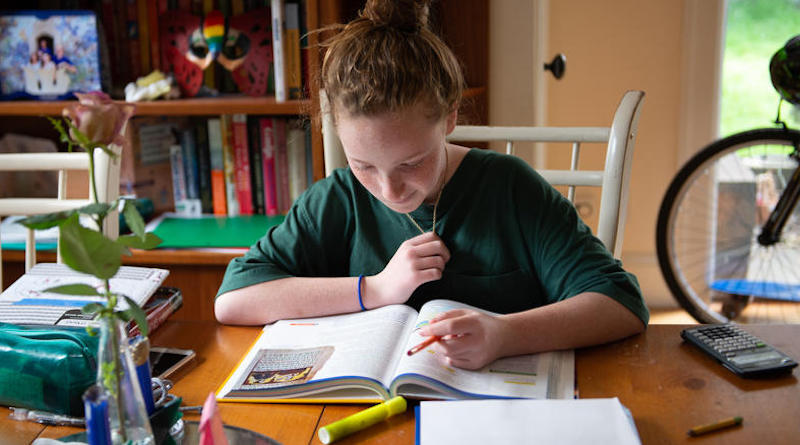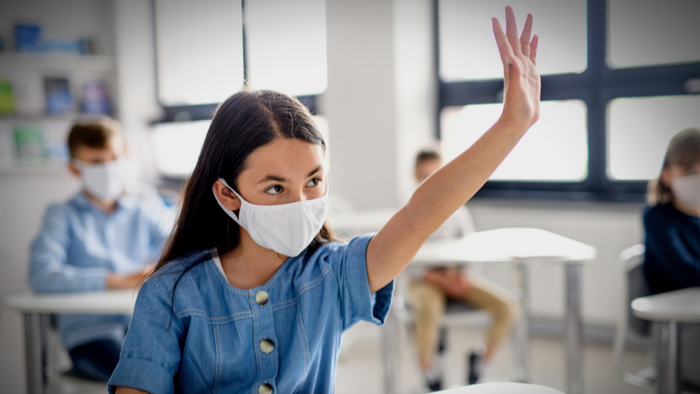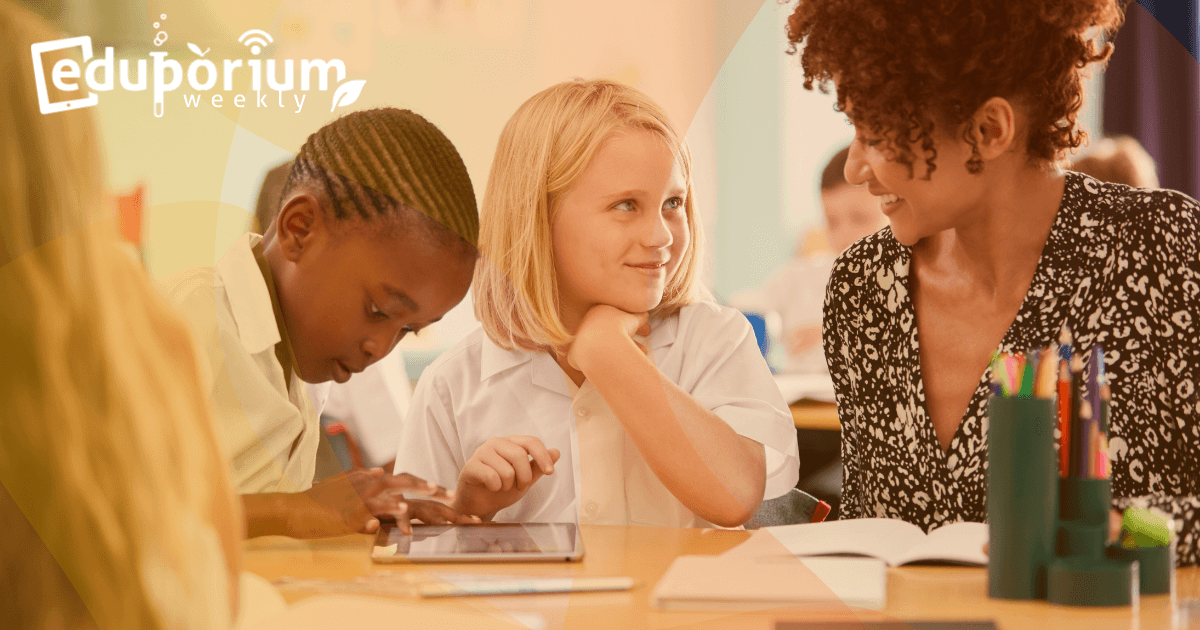Perhaps one of the most talked about topics in the last few months, the debate surrounding learning loss has taken center stage in the education world. Learning loss is nothing new since students spend a couple of months outside the classroom each year. Of course, pandemic-fueled remote learning is another story. Most students weren't afforded the same learning opportunities in the last year and some struggled to access any educational experiences at all. The debate, however, is centering on what exactly constitutes 'loss' and how that relates to each individual student. What do we know? It's incredibly difficult to pinpoint levels of learning loss and how they differ from one student to the next.
The Huge Focus on Learning Loss
To understand the concerns surrounding learning loss, it's best to first understand what the term refers to. Generally, learning loss is considered to be the opportunities students miss out on to continue developing their intellect and skills. In this situation, specifically, it's comparable to an opportunity cost. While students aren't necessarily forgetting the things they've learned in previous years or during their remote learning experiences, there was also, more than likely, that opportunity cost. For example, teachers may have needed to spend more time on more important lessons and concepts. This means they'd forego others and be unable to introduce new things. Ultimately, most students were unable to learn as much new material as they typically would under normal circumstances. And, this is how the concept of learning loss comes into play—largely in reference to missed opportunities.
The connection between learning loss and equity.
Some parents and educational leaders may also look at this as students falling behind. The phrase 'falling behind' is also very much arbitrary. How can we fairly and accurately define where every student should be in terms of their age, intelligence, creativity, and social skills? This is a question with many possible answers and very few rooted in concrete evidence. It's true that students will endure academic setbacks, but they won't necessarily result in them 'falling behind' in every instance. This theory—while not 100 percent consistent—is due to almost every student navigating the same situation. If one student is lacking academic progress, for example, there's a good chance the 20 other students in that class are in the same boat. And, beyond that, there's a good chance the 200 other students in the school are as well.
Going about it the right way.
In our culture, however, there's the constant need and pressure to ensure progress. There has also been another point of view tossed around as students continue returning to school buildings. They shouldn't feel like they're returning to the classroom to simply be fixed. They're resilient and naturally want to continue learning as opposed to going through the motions to ensure they haven't regressed. With this approach, there is little room for hands-on experiences, creativity, and enjoyment. It could also result in students feeling more like numbers than people. Tie in the social-emotional factors and it could become very detrimental to them. Essentially, an overly aggressive approach at fighting learning loss, especially if attempted in certain ways, could wind up having little positive effect on students.
Why Learning Loss is Sometimes a Misleading Concept
There's little point in denying that students have not had the same experiences they normally would over the last year. We could even argue that they haven't learned as many new academic concepts as everyone expected. To say that they've lost out on key opportunities, however, is a bit drastic. Think about it like this. In 21st century education, we harp on the importance of students learning specific skills. Some of these are hard skills, but many others are soft skills. In the last year, the strides students have made in soft skill development can, in the long run, be monumental. Being away from their classmates and their teachers has actually forced millions of students to develop these skills on the fly and, if nothing else, that's something positive we can take from this experience and certainly qualify as a learning 'gain' not a learning 'loss.'
What students have actually learned.
Yes, many students will have to wait another year to learn some of the things they would have learned in the classroom this year. That't not necessarily a bad thing, though, because they've still learned a whole lot. Not to sound overly positive but, if the pandemic never forced us into remote learning, there's a lot students wouldn't have learned. This starts with those soft skills we mentioned, but includes some others as well. The first of those, without much doubt, are adaptability and flexibility. A cornerstone of real-world readiness, adaptability allows us to be comfortable in any environment and despite any changes to expectations. When they can adapt, students are better able to attain meaningful learning experiences—just as they'll be able to achieve greater professional success if utilizing this skill set in their futures.
Other skills students learned.
On the flip side, students have also had to learn to be proactive. This means they've had to work on their communication skills—another hallmark of 21st century soft skills. Because of physical distance between themselves, their teachers, and their friends, students had to actively communicate in order to stay in touch. This helped keep their relationships as strong as they could be and ensure they were able to ask important questions about assignments so they could remain on top of things. If students weren't communicating, there's little chance they would be successful in remote learning. In fact, this was an opportunity for some students to push past shyness and learn new communication skills to ensure they were able to succeed as best they could.

Scaling Back on Concerns About Student Regression
At first, it was almost instinctual for teachers and parents to panic about the perceived learning loss that was about to affect millions of students. Though it's been over a year since remote learning began, that threat is still in the minds of many. Only now, we know more about what this term actually refers to and the most important elements related to it. Like we've said, students haven't necessarily experienced losses as it pertains to distance learning. What they have experienced, however, is a learning disruption. Without consistent and immediate access to their teachers, instruction has been restructured. But, this doesn't necessarily mean they'll regress in the long run—though it still could for some.
Addressing gaps with a non-academic approach.
We don't know the extent to which this whole disruption has affected students and may not for some time. What we do know is that it's given educators the opportunity to revise instructional and relationship building strategies. Beyond intellectual growth, students also need support to mature socially. Each student has unique needs and has likely been impacted by the pandemic in a unique way. Though they may have faced some setbacks academically, other non-academic focuses can help them make up any ground they may have been perceived to lose. One strategy is to ask students what elements of remote learning worked well for them. There may be something teachers can continue with upon returning to the classroom. Another could be to convey that the focus isn't on learning loss but rather on offering support for moving forward. It all depends on individual situations.
Facing losses with an equity-centered strategy.
One reason the conversation about learning loss has been so prominent is because of equity issues in remote learning. To that point, one of the ways to address student experiences in remote learning is to focus on equity when planning a return to the classroom. Factors outside the control of educators and students led to inequities throughout the last year. It doesn't have to be at the center of every instructional decision, though, but considering how certain efforts made in the classroom affect different types of students is one way to reconnect with them. Sometimes, low-tech learning opportunties can help some feel more included. Also, others might need more exposure to technology to help them rebuild some proficiencies. Unfortunately, it's not just as simple as assuming everyone's experienced the same levels of learning loss.
Strategies to Reverse COVID-19 Learning Loss
We know there were achievement gaps long before the pandemic upended everything a year ago. What we didn't quite realize at the time, however, was just how vulnerable some students were and continue to be to disruptions. Factor in remote access to learning technology and students who already felt the effects of achievement gaps could continue trending in the wrong direction. Unfortunately, these gaps affect students from low-income families among the hardest of any group. And, as demoralizing as it is, we understand these gaps exist but are largely unable to do much about them.
Helping students return and recover.
Of course, it's not as easy as simply providing students with more rigorous instruction upon returning to school. Teachers also may feel pressures to cover as much as possible with students in the classroom, including reviewing topics from remote learning and introducing new ones they were unable to get to. One of the most common suggestions thrown around has been an increased focus on tutoring. This would, of course, allow teachers to work with students to help them focus on some of the important things they need to work on, but would come at a cost. School and district officials would either have to spend money hiring professional tutors or ask their already exhausted educators to take this on as well.
Catching students up through acceleration.
If implemented, tutoring could be used with students from preschool through elementary school. According to research, it's typically quite effective and can help students make up a lot of progress. Another suggestion has been to try to accelerate learning whenever possible. In these situations, students would work with educators or professionals to learn as much as possible in tight periods of time. The goal of this is quite literally to speed things up so they can get in the position to continue moving forward. Other than relying on tutoring and this acceleration, there aren't too many more strategies for combatting learning loss. It could come down to educators simply doing what they can and meeting students where they are.

Addressing Situations of Learning Loss
If you're still panicked that learning loss is having a huge effect on some students, there are some things you can do. The first is to try not to panic and remember that there's no defined standard requiring every student to possess a minimum amount of skills and competencies. Hopefully, your school, district, or state leaders have been keeping detailed records since the onset of the pandemic. Like with many important educational topics, having accessible and understandable data can make a big difference. This may include the numbers of students without technology access throughout remote efforts, how often students were absent, if they participated in remote lessons, and if any graded work declined during this time (among many others).
Helping students readjust with intent.
Understanding the data and what it means for different students is critical for helping them readjust and move forward. From there, educators and curriculum coordinators can create relevant learning experiences. These should be designed with intent and with the needs of students affected by learning loss in mind. It might also be valuable to include lessons or conversations that help address student behavior. Many of them may have simply forgotten what it's like to be in a classroom environment. They may also be overly excited to see and talk with friends again. While reconnecting socially is certainly important, they also have to return to learning. Making sure students know the importance of focusing and exploring some strategies for helping them can be useful.
Covering the basics with balance.
Ultimately, teachers and principals should also work together to create a set of attainable goals for students upon returning. They can work on these over the summer months and draw on their knowledge of student performance to set realistic expectations. In terms of subjects, educators might want to rush to make up any ground students lost in reading or math skills. This initial assessment could be overwhelming, especially if administered overly fast. It's also important, however, and could shed light on how educators can balance the return to the classroom for individual students. Remember, all students are capable of coming through these experiences—it just takes the right support and proper application of what the data tell us.
For the latest EdTech, STEM, and 21st century education news, follow us on Twitter and Instagram. Like us on Facebook, too, or sign up for our newsletter for our latest product announcements and offerings. If you have an idea for an Eduporium Weekly theme, send us a message on social media or comment below.



